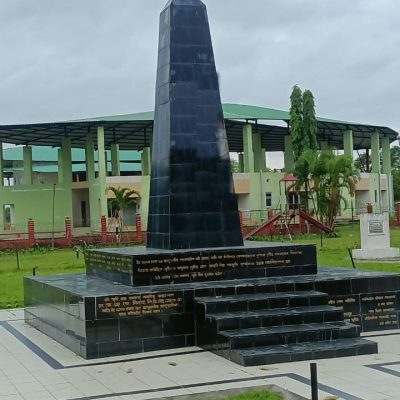
No doubt the British appeared in Assam in the guise of saviours of the people suffering from a situation of chaos, lawlessness and oppression created by the Moamaria Uprisings and the Burmese invasions. But gradually people found from their experience that their main interest was extortion of revenue even to the detriment of the welfare of their subjects. Even Robertson in 1832 acknowledged the evil effects of the British revenue policies on the ryots. He found that its inhabitants emigrating, its villages decaying and its revenue annually declining. “The Court of Directors also accepted that “a deadful extortion had beggared the ryots and renderd a large portion of Assam waste.
The revenue policies of the British Government in India, both annual and periodical settlements, are not based upon any sound statistical data. The tax on never corresponded to any improvement in the economic condition of the people. The British kept on enhancing them very ten years. Above all, they were unmindful of the gravity of poverty and sometimes even starvation on the part of the people. The economic condition of the peasantry was worsened by the increase of moneylenders who ruined them to some extent. So. people belonging to different strata in society rose against such exploitations. It is quit clear from the large participation of Dolois and Gosains in the Raijmels, the mouthpiece of peasant revolts in Assam. Between 1861 and 1894 people expressed their uneasiness at the taxation and revenue policies of the British through the Jayantia Rebellion of 1860-62, Phulaguri Uprising of 1861. Patharughat Uprising of 1868, Rangia, Lachima and Sarukhetri Uprising of 1893-94 and finally the Patharughat Uprising of 1894. Even in the Phulaguri Uprising of 1861 the British lost the life of Lt.Singer.
The British had never learnt any lesson from the happenings of 1861-68. They increased the rate of revenue in each periodical reassessment. As per the reassessment of William Ward, the Chief Commissioner of Assam, the rate of revenue was increased from 70 to 100 percent in the Brahmaputra Valley. In 1892-93, the total revenue collected in the valley was Rs.32,64,605. In 1893-94, it rose to Rs. 43.50.170. The total increase was Rs. 10,85,565. In 1892-93, the collection of revenue in the district of Darrang was Rs. 4,96,682. In 1893-94, it rose to Rs. 6,48,820. The increase was Rs. 1,52,138. On the otherhand, total increase of surveyed lands were just 1,466 acres.